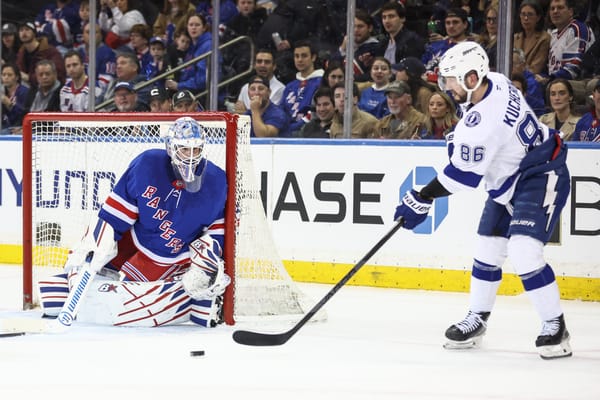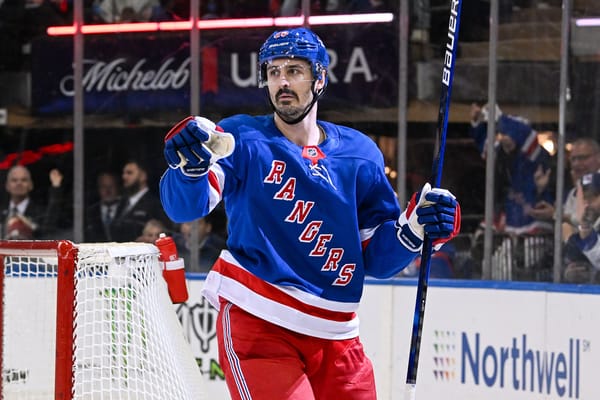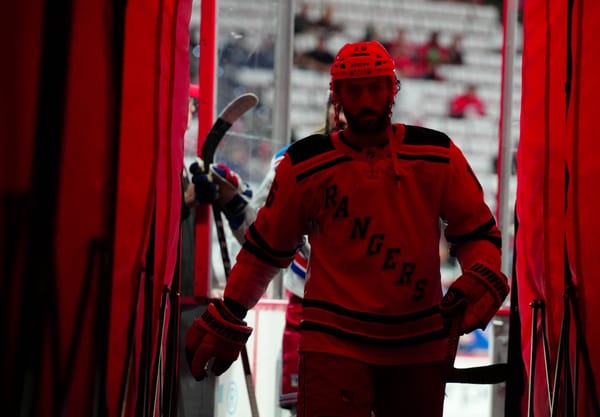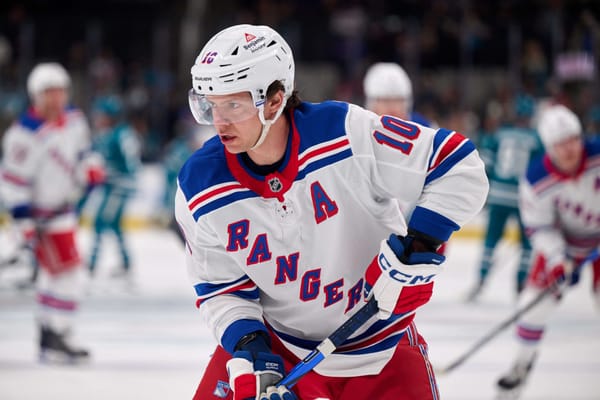New York Rangers Prospects: What Can Be Expected Of Jesper Fast?
A deep look at who Fast is right now and who he might become for the Rangers.
To some, 2010 sixth-round pick Jesper Fast remains a bit of an unknown.
The speedy Swede, in North America after completing his 2012/13 campaign with HV71 of the Swedish Elite League, observed the Blueshirts' 4-2 win over the Winnipeg Jets at Madison Square Garden last Monday before skating with the team at a formal practice on Tuesday afternoon. He debuted for the AHL's Connecticut Whale on Friday, notching a PP goal that proved the difference in a 4-3 win.
So, what can fans new to Fast expect from him?
Fast's best asset is his speed. No question. He skates hard, accelerates rapidly and forechecks with a sustained intensity. He's not the biggest guy, but he works hard and rarely gets pushed around by opposing defenseman. He isn't afraid to take a hit to make a play either and he uses his speed to force opportunities around the net. In a nutshell, Fast has the tools and game to help the Rangers moving forward.
He's had a great year in the Swedish Elite League, posting 18 goals and 17 assists in 47 regular-season games. On average, he saw more ice-time than any other HV71 forward, often rewarding coach Ulf Dahlen‘s faith with a big performance and a scoreboard contribution. He worked well with Jason Krog and Rhett Rakhshani, the trio forming HV's go-to offensive line.
Disappointingly for Fast, his final playoff run in Sweden fizzled out in a somewhat surprising five-game defeat to Linkoping. Perhaps most importantly though, beyond the numbers and good play, it was a relief to see that the horrible ankle injury he suffered last season hadn't effected his skating. His speed and acceleration are both still there.
Fast's foot speed causes problems for opposing players; he doesn't necessarily need to touch the puck to create an offensive opportunity such is the way he sticks with the play and hounds defenseman into mistakes. He does a solid job on the defensive side of the puck too, but without doubt his strength is his offense; his shot, his movement and his reading of the play.
I fail to remember the link, but there's a highlights package somewhere online that pretty accurately depicts the ways Fast can score. His shot is a big threat off the rush, but he has the hands to finish a breakaway and he'll go to the net without hesitation.
Like fellow Blueshirts' prospect Oscar Lindberg, Fast's developmental curve has been pretty rapid over the past two seasons and he's made significant improvements year-by-year.
Of course, as with all European skaters, there's the question of Fast adapting to the North American game. He'll probably need to fill out his frame a little more in order to withstand the increased physical rigours of NHL hockey, but he's played on North American ice before at the 2011 World Championships in Buffalo and he knows what's required to make the transition.
Note: We have limited photos of Fast we can use. Since we used one in Alex's last story, here's one of Carl Hagelin.




